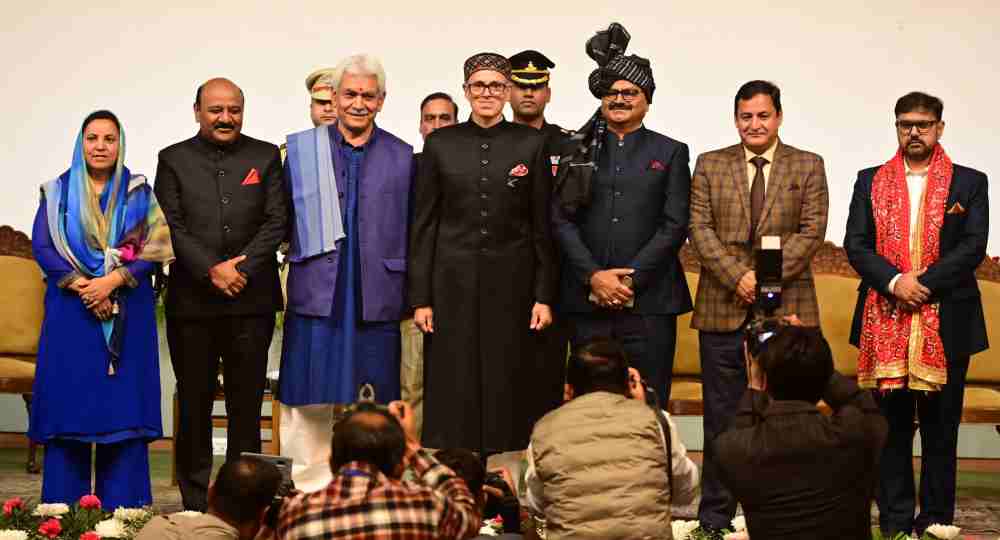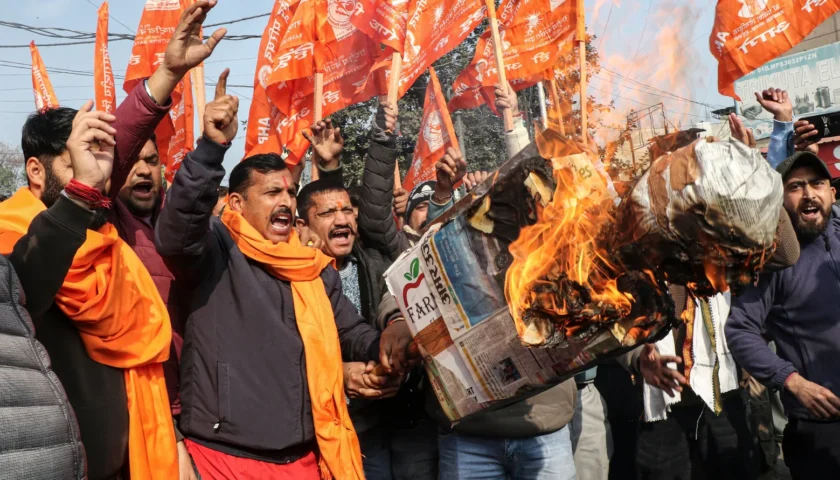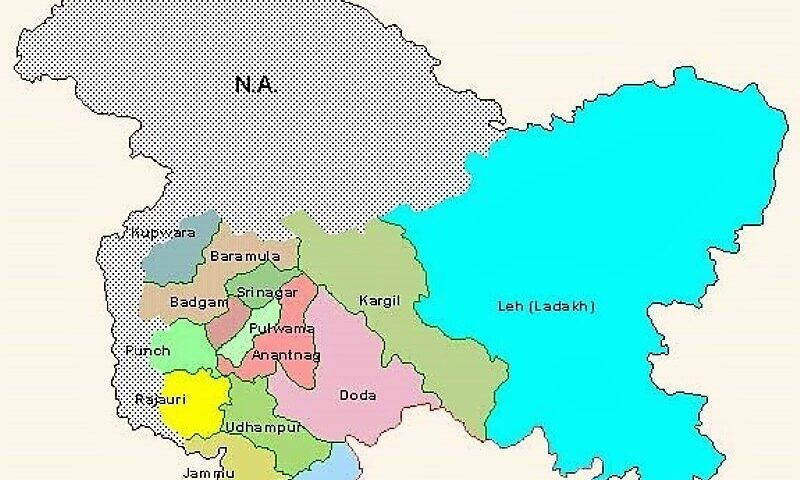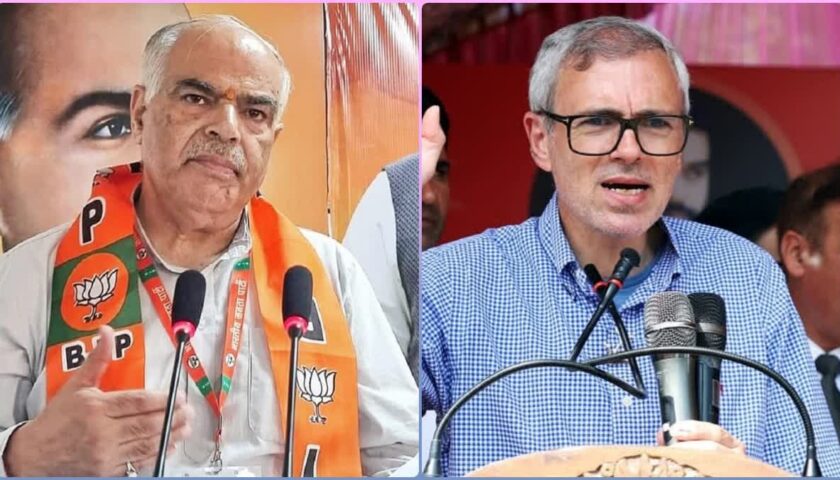Between Statehood Aspirations and Administrative Gridlock
In the complex governance structure of Jammu & Kashmir, a fresh political standoff has emerged—this time revolving around the Transaction of Business Rules (TBR). The draft, prepared by a Cabinet sub-committee led by Deputy CM Surinder Choudhary, was submitted in early March 2025, only to be returned with objections by Lieutenant Governor Manoj Sinha in early May. The impasse underscores a deeper tension: Who holds real power in the UT—elected officials pushing state-like authority, or the LG safeguarding constitutional boundaries under the Reorganisation Act, 2019?
Origins: Why New Business Rules?
The 2019 Reorganisation and Its Aftermath
In August 2019, Parliament passed the Jammu & Kashmir Reorganisation Act, converting the former state into a Union Territory with a legislature, and a separate UT of Ladakh preciouskashmir.com+12dailyexcelsior.com+12timesofindia.indiatimes.com+12en.wikipedia.org. This shift dismantled J&K’s prior autonomy under Article 370, realigned it with Article 239A, and vested executive powers in a Lieutenant Governor, appointed by the Centre.
The Reorganisation Act centralized control over areas such as police, public order, All India Services, Anti-Corruption Bureau, and judicial functions, with Section 53 granting these to the LG’s discretionary domain en.wikipedia.org+8drishtiias.com+8preciouskashmir.com+8.
The Need for New “Business Rules”
In the wake of reorganization, a transitional set of business rules drafted by the Ministry of Home Affairs in 2020 provided temporary guidance. Post-elections in October 2024, CM Omar Abdullah’s cabinet recognized these as inadequate for communally diverse J&K, and formed a sub-committee—comprising Deputy CM Surinder Choudhary, Ministers Javed Rana and Sakeena Itoo, and legal advisor Rohinton Nariman—to draft a robust rulebook dailyexcelsior.com+1timesofindia.indiatimes.com+1.
The Draft Committee’s Vision: Empowering the Elected Government
Methodical Comparative Review
The committee thoroughly compared three frameworks:
-
Pre-2019 state-era business rules
-
MHA notifications under Articles 55–239A in 2020
-
Amendments introduced between 2023–2024 thekashmirhorizon.com+13dailyexcelsior.com+13drishtiias.com+13.
Core Proposals in the Draft
Key recommendations included:
-
Postings & Transfers: Cabinet decision-making authority over IAS, IPS, JKAS officers—limiting LG discretion, including appointments of DGP, district magistrates, and executive magistrates thestatesman.comthestatesman.com+6dailyexcelsior.com+6timesofindia.indiatimes.com+6.
-
Advocate General Appointment: Shifted from LG nomination to CM/Cabinet’s domain—aligning with earlier state protocols.
-
Redefining Chief Secretary’s Role: Easing procedural bottlenecks by rerouting decision-making through Cabinet vs. bureaucratic channels.
-
Cabinet Oversight: Mandating LG to act on Cabinet’s recommendation in strategic administrative matters.
The aim: replicate state-level autonomy while retaining UT status superficially.
The LG’s Objections: Legal Grounds for Already-Drawn Limits
Return of the File in Early May
On May 4, 2025, LG Manoj Sinha returned the draft to the CM’s Secretariat for clarification on whether it adhered to Reorganisation Act 2019 Section 53 preciouskashmir.com+3dailyexcelsior.com+3businesstoday.in+3newkerala.com+8kashmirahead.com+8kashmirdotcom.in+8. The returned file cited specific conflicts, including:
-
Encroachment on LG’s discretionary powers over All India Services.
-
Transfer powers restricted in contravention of the Act.
-
Changing the procedure for AG appointment without legal basis kashmirahead.com+12dailyexcelsior.com+12thekashmirimages.com+12menafn.com+1businesstoday.in+1thekashmirimages.com.
Key Legal Provisions
-
Section 53: LG’s sole discretion in IAS/IPS postings, Anti-Corruption Bureau, public order.
-
Rule 42A (Amended 2024): Appointment of Advocate General must be routed through LG via Chief Secretary thekashmirhorizon.com+6businesstoday.in+6dailyexcelsior.com+6.
-
Rule 42B & Rule 43: LG’s oversight in prosecution, police, prisons, and AG roles—all through LG vetting .
Cabinet’s Response: Resubmission without Revisions
Faced with LG’s return, the Cabinet convened in Srinagar (May 5, 2025) and drafted a firm response without altering the draft—and resubmitted the file dailyexcelsior.com+7thekashmirimages.com+7thekashmirhorizon.com+7.
They emphasized:
-
Rigorous internal procedures were followed.
-
No violation of the Reorganisation Act; powers clarified, not usurped.
-
Reaffirmed their stance that elected representatives must be empowered for administrative efficacy, especially with post-Article 370, hybrid UT status.
Political Fallout: Voices in the Political & Public Spheres
Signals of Institutional Friction
While official silence persists post-resubmission, speculation abounds. Some suggest India–Pakistan tensions may have pushed this back; others see political maneuvering ahead of future elections .
National Conference’s Stance
Their spokesman Tanvir Sadiq made it clear: the LG’s return isn’t a rejection, but a request for clarity newindianexpress.com+2thekashmirhorizon.com+2thestatesman.com+2. Meanwhile, NC MP Aga Syed Ruhullah flagged ongoing confusion over authority—especially in dismissals based on “terror links”, a politically charged decision lacking clarity over decision-making locus thekashmirhorizon.comkashmirdotcom.inen.wikipedia.org.
Governance Implications: What’s at Stake?
Administrative Accountability & Efficiency
Proponents argue that bureaucrats should answer to elected leaders (CM/Cabinet), not the LG—this is about governance responsiveness.
Constitutional Checks & Federal Balance
Opponents fear the draft illegally overrides Parliament’s Reorganisation Act. Uttering a ‘statehood-in-all-but-name’ approach may invite judicial scrutiny or federal intervention.
Policy Continuity and Crisis Response
During crises, clear chains are essential. This standoff signals deeper uncertainty—who calls the shots in deployment, law-and-order, or even local elections?
Lessons from Delhi: NCT vs UT Governance Struggles
The tussle mirrors Delhi’s LG-CM conflict, where courts ruled that LG must act on the aid and advice of the elected government on executive subjects—but retain utter discretion on police, prosecution, land (as per Supreme Court, 2018) preciouskashmir.com+3menafn.com+3en.wikipedia.org+3.
J&K, unlike Delhi, is technically closer to a state (has full legislature), but remains hamstrung under Reorganisation Act constraints—notably Senate Section 53. The future is uncertain—J&K might chart a path between Delhi model and full federal parity.
The Road Ahead: Scenarios Unfolding
LG Delays, Cabinet Pushes, Civil Society Pressures
With no update since resubmission on May 5, civil society experts argue: either the LG must issue approval or reject officially—with 30 days maximum—under government-of-India rules. Silence only compounds confusion earthnews.in+1theprint.in+1.
Legal Recourse
If the LG rejects, the government may challenge the decision in the J&K High Court or Supreme Court, citing democratic rights—though Section 53 is on paper.
Negotiated Settlement
Alternate model: LG office and Cabinet find middle ground—keeping LG discretion over IAS/IPS while transferring other administrative tweaks to the Cabinet.
What Next: Required Clarity
The region needs:
-
Transparent Notification of LG’s current position.
-
Public Release of Cabinet’s draft to facilitate civil discourse.
-
Debated Passage or Rejection, grounded in constitutional law.
-
Judicial Review, if deadlock continues, to affirm or deny powers.
Bottom-Line: More Than Red Tape – It’s About Democracy
The Transaction of Business Rules draft is not about procedure—it’s a test of J&K’s evolving governance and democratic agency. Will the electorate’s voice be amplified, or will centralized oversight continue overshadowing regional mandates?
The LG’s red flag reflects legal boundaries; the Cabinet’s insistence shows political will. Whichever precedent emerges will shape J&K’s political journey for years.




